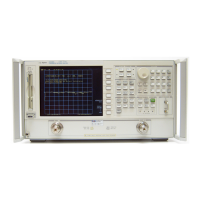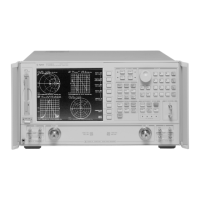Programmer’s Guide 6-19
Trace Data Transfers
Performing Your Own Data Processing
The program below demonstrates how to perform data post-processing. It
takes the measurement data and reverses it, such that the low frequency
data is displayed on the right end of the trace, and the high frequency
data is displayed on the left.
100 ! Display the measurement data backwards
110 REAL Fmt(1:201)
120 ASSIGN @Hp8711 TO 716
130 !
140 OUTPUT @Hp8711;"FORM:DATA ASCII"
150 OUTPUT @Hp8711;"ABOR;INIT:CONT OFF;*WAI"
160 OUTPUT @Hp8711;"DISP:WIND:TRAC1 OFF;TRAC2 ON"
170 LOOP
180 ! Take sweep
190 OUTPUT @Hp8711;"INIT1;*WAI"
200 ! Read the trace from the formatted data array
210 OUTPUT @Hp8711;"TRACE:DATA? CH1FDATA"
220 ENTER @Hp8711;Fmt(*)
230 ! Download the trace, backwards,
235 ! to the formatted memory array
240 OUTPUT @Hp8711;"TRACE:DATA CH1FMEM"; ! Note the ";"
250 FOR Pt=1 TO 201
260 OUTPUT @Hp8711;",";Fmt(202-Pt); ! Note the ";"
270 NEXT Pt
280 OUTPUT @Hp8711;"" ! Send linefeed
290 END LOOP
This example program uses ASCII trace data transfers. Higher speed
can be achieved using binary data transfers. If using IBASIC, high-speed
subroutines can be used for even greater performance. Refer to the
IBASIC Handbook for details.

